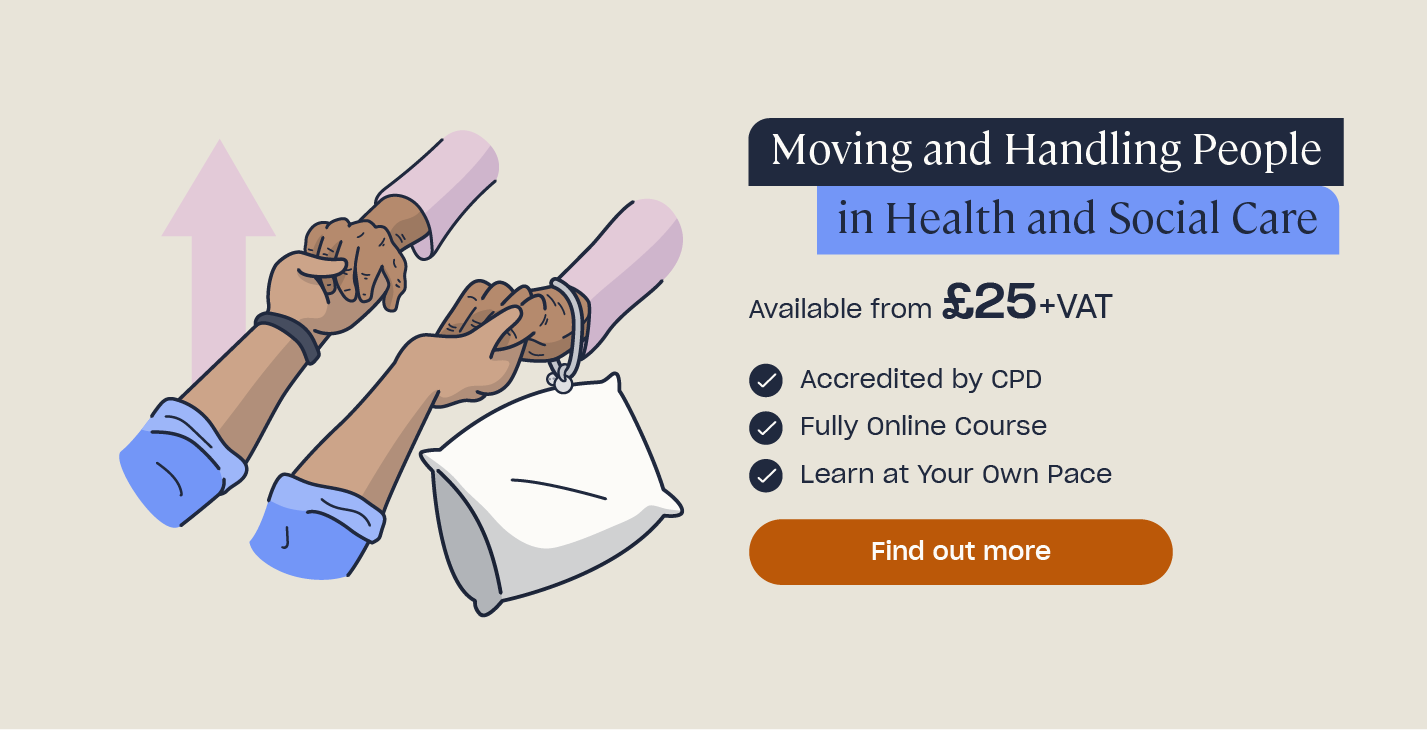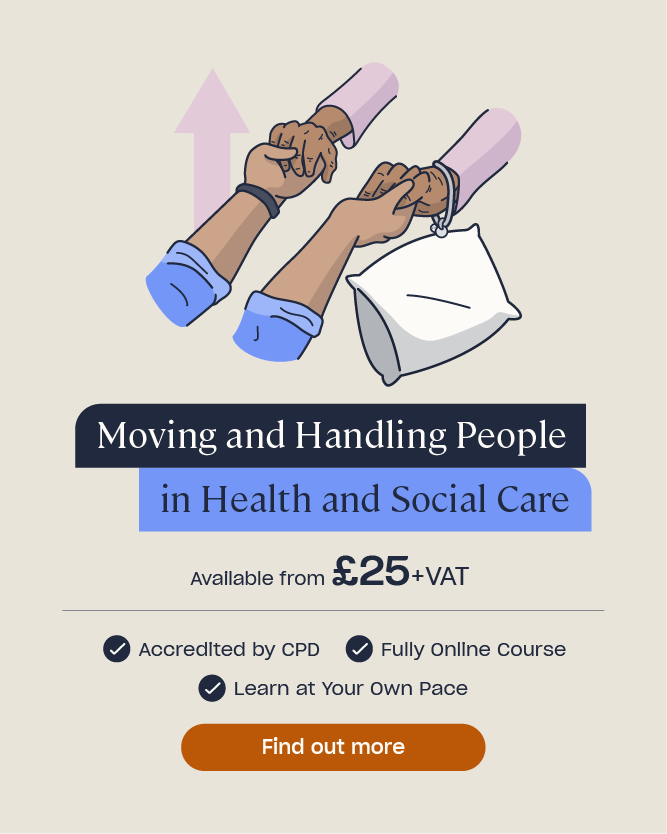Ergonomic Approach To Manual Handling: Techniques For Carers
If you work in a health and social care setting, your role will likely involve some degree of moving and handling. Whether you’re using specialist equipment, such as hoists or slide sheets, or simply assisting someone to use their wheelchair or stand from a chair, it’s essential that you carry out each manual handling task with health and safety in mind.
In this article we will look at the benefits of adopting an ergonomic approach to moving and handling and outline the risks of poor practice. We will also detail some of the manual handling techniques often used to assist individuals and look at the purpose of some key pieces of equipment you may be required to use.
What is an Ergonomic Approach to Manual Handling?
An ergonomic approach to manual handling focuses on how people work within their environment, looking at the effectiveness of the movements used to perform certain tasks. An ergonomic approach is one that adapts how a task is performed to reduce the risk of harm or injury by ensuring there is no unnecessary stress placed on the body. For example, altering the height of a bed or hoist to avoid over bending and stretching, or using two care workers to assist someone to walk using a handling belt to prevent awkward twisting or uneven weight distribution.
Those working as caregivers are at an increased risk of strains and injury to themselves and those they care for. An ergonomic approach is not only necessary for everyone’s well being but ensuring safe practice at all times is also a legal requirement. The various pieces of legislation in place, such as The Care Act 2014 and The Manual Handling Operations Regulations 1992, are there to protect both employees and those receiving care.
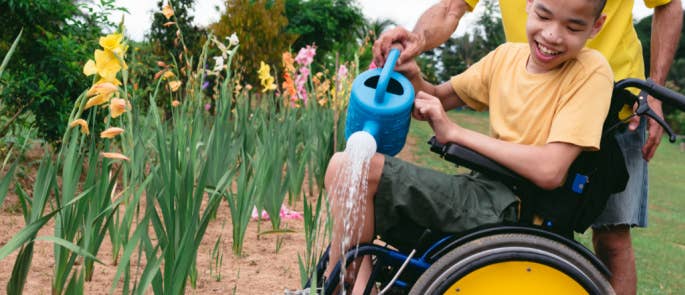
Benefits of an Ergonomic Approach
The main reason for approaching moving and handling ergonomically is to avoid physical injury. Being able to move and handle people and objects safely, means using the correct pushing, pulling, lifting, lowering and manoeuvring practices. As a caregiver, the importance of following risk assessments and care plans should also be fully understood and complied with. This helps to safeguard all parties involved.
Adopting this approach also ensures that the person you are assisting feels safe, comfortable, at ease and that their welfare and dignity are maintained throughout. Ensuring human dignity and respect at all times is vital in a caregiving role.
The main benefits of an ergonomic approach are that it:
- Prevents injury to all parties.
- Promotes the dignity of those being assisted.
- Complies with the requirement for everyone to receive care free from the risk of harm.
- Reduces staff sickness through injury and protects long term musculoskeletal health.
- Ensures better quality of care.
- Builds trust and confidence between the caregiver and the receiver.
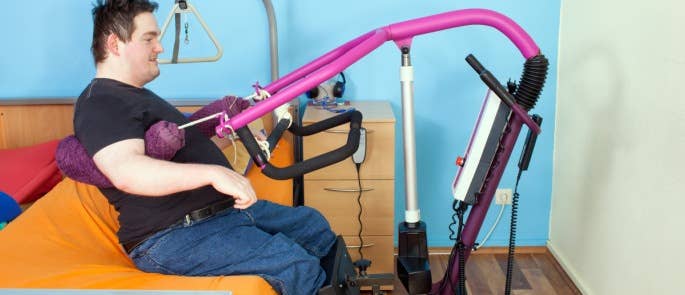
Risks of Poor Moving and Handling
Musculoskeletal disorders (MSDs) are the most common injury caused by non-ergonomic manual handling practices. For example, back pain and upper and lower limb disorders, including aches, tenderness and stiffness in the legs, hips, shoulders, neck and joints.
If not carried out ergonomically, manual handling activities can lead to serious physical injury to you and the person you are moving. Those being moved may suffer from damage to fragile skin, cuts, grazes, bruises, and injuries to the neck, shoulders and arms if appropriate techniques are not used.
The main risks associated with poor moving and handling practice include:
- Cumulative stress injuries to caregivers.
- Greater staff absences due to injury.
- A lack of trust between the caregiver and the receiver.
- Poor quality care.
- A poor reputation of both staff and organisation.
- A failure to comply with health and safety standards and legislation.
- Poor upholding of the individual’s dignity and wellbeing.
Want to Learn More?
Take a look at our dedicated Health and Social Care Courses for a varied range of topics, such as Moving and Handling People and our Communication Skills Course. Developing your knowledge beyond core mandatory training is an excellent way to broaden your understanding, enabling you to provide a higher quality of care.
Manual Handling Techniques for Carers
Moving and handling techniques can involve working with or without equipment and are based on ergonomics and natural human movement patterns. Their aim is to prevent the risk of injury to all parties. The correct technique to use and when, will depend on the individual’s needs and abilities and the nature of the task. Always consider the risk assessments and work in line with their care plan.
It is important to remember that there can be some variation to moving and handling techniques. The techniques you use in practice should be those that you have been practically trained to perform. When working with a colleague, always work in a way that you are both familiar with to avoid any misunderstanding and communicate throughout.
Before we take a look at some specific techniques that adopt a safe and ergonomic approach, it is important to always keep in mind that safe and efficient movements must be based on a sound posture. No matter the task, always ensure that you:
- Get close – getting close to the load, whether that be a person or an object, means being closer to your base area, improving balance, stability and comfort.
- Adopt an angle – approaching a load/person at an angle instead of at their side can reduce over-twisting.
- Relax your knees – this doesn’t mean bent, just relaxed to allow for a more even distribution of weight.
- Offset your feet – having your feet apart with one slightly in front increases your base area, giving you better balance and making it easier to adjust your position.
- Keep your head up – raising your head helps your spine stay in good alignment.
- Lead with your head – for all parties, the head should lead the way when sitting, standing and walking.

Helping Someone Walk
If a service user requires assistance from one care worker whilst walking, this technique is often the most appropriate:
- Stand beside the person with your near arm around their waist and hold their furthest hip.
- With your other hand, make a fist or make your hand flat with your palm up and bring it across your front toward them. They can then place their palm on yours for support.
- This technique allows the receiver to use a stick in their free hand if required.
- Do not offer a linked arm or interlinked hand hold, as if they fall they will likely take you with them.
This technique can be adapted to having a caregiver offering support on both sides, or assisted walking with a handling belt can also provide additional stability.
Sit to Stand Technique
Being able to assist someone from a sitting position can be invaluable. If standing from a raisable chair or bed, always utilise that equipment to aid both you, as this will reduce any physical impact on all involved. Whilst we mention standing from a chair in the example below, it can be applied to various sit to stand scenarios.
- Make sure the person’s feet are slightly apart, close to the chair and with the foot of their strongest leg slightly further back. Moving their bottom closer to the front of the seat, if possible, can make standing easier.
- Begin by standing at their side – this can be performed as a single carer or with a colleague. Stand at a slight angle to avoid over twisting as they stand and avoid tensing up.
- Keeping your feet apart, ensure your back foot is facing the chair and the other in the direction of travel.
- Lower yourself down, bending slightly at the knee with a straight back and place the palm of your hand on the front of their shoulder.
- The other hand can go around their lower back for support, or if using a handling belt, hold the handle.
- Ask them to bend forward slightly and always look ahead, not down.
- They may use the chair arms to push up.
- Communicate clearly, such as “one, two, stand”. Always make sure they know what is expected of them and when to avoid confusion and jarring – it helps achieve a smoother and safer process.

Patient Transfer Techniques
There are many situations that require an individual to be transferred and this can be a regular part of a person’s routine. It could be that they require transfer from an armchair to a wheelchair, bed to chair, chair to toilet or bath, or any combination of these.
The care plan will outline the appropriate technique to use and any specialist equipment that is required. It should never be assumed that because you have equipment to hand and know how to use it, that it is safe and appropriate to use for anyone.
Some common pieces of equipment used during transfers may include:
- Handling belts.
- Hoists and slings.
- Wheelchairs.
- Turning aids.
- Transfer boards.
Should You Lift a Person Heavier Than You?
The key word to note within this question is ‘lift’, as it can imply physically supporting a person’s entire weight to raise them. Many areas of the health and social care sector have a ‘no lift’ policy in place, not only to protect their staff but also those they care for. Always follow care plans, undertake risk assessments and utilise the appropriate ergonomic techniques and equipment required.
When considering the weight of an individual in comparison to your own strength and abilities, it is worth considering what adjustments need to be made to assist a bariatric patient. Many pieces of equipment used to support the moving and handling of an individual have a maximum weight capacity and may not be appropriate. If a person requires assistance whilst in bed, additional caregivers may be required to safely roll them and perform care tasks.
The impact of lifting and supporting the leg of a bariatric patient, for example, is one that can often be underestimated. This could be whilst providing personal care, wound care or to assist with dressing. Whilst it may seem like a standard task, it is one that often sees the caregiver feeling unacceptable strain from prolonged weight bearing and awkward positioning and twisting. If any discomfort is felt, the approach to the task should be reassessed and adjusted accordingly.

Tips and Advice for Moving and Handling Patients
Using appropriate techniques and equipment is the foundation of applying an ergonomic approach to moving and handling activities in health and social care. The technique or equipment required will be based on the individual and the results of the risk assessment. For example, their mobility, weight and height, fragility and the task to be performed all help to determine what is used and when.
When it comes to moving and handling there are many things to consider, but when it involves a person, the care provided should always be person-centred. Those delivering the care should be fully trained and competent. Even if certified in moving and handling, if a piece of equipment is unfamiliar to you or has not been assessed and deemed appropriate for a particular individual, you should not proceed without seeking further guidance and support.
It is also vital to remember that not only is dignity a key factor when performing moving and handling tasks, but so is the need to maintain and promote independence. To do this you should never make assumptions about a person’s abilities, just because they struggle with certain activities does not mean that they need assistance for everything.
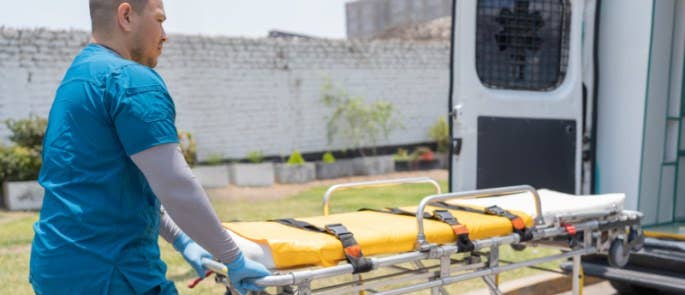
Communicate, ask questions, follow care plans and allow enough time for people to perform any tasks and movements they can independently. A person should never be overly handled or have reduced opportunity for independence to save time, due to insufficiently trained staff or because of unclear communication.
An ergonomic approach is a central aspect of safe moving and handling, but that alone does not make for good practice, it is a multifaceted approach with the individual’s needs, choices, wellbeing, dignity and independence being supported throughout.
As a health and social care worker, it is important to protect the safety of yourself and those in your care. Manual handling tasks can be big or small and involve moving and handling people, equipment or a variety of objects on a daily basis. The movements involved can lead to strains and injuries if done incorrectly and can have a direct impact on the quality of care and wellbeing of those involved, making it essential to adopt an ergonomic approach to all tasks to ensure best practice at all times.
Further Resources:
- What are Moving and Handling Policies in Health and Social Care: Guidance on Equipment
- 9 Ways to Help Promote Dignity in Your Care Home
- Ensuring Human Dignity and Respect in Nursing: A Checklist
- Using Technology in Health and Social Care
- Moving and Handling of People in Residential Care Course
- What is Skills for Care?
- Introduction to Safeguarding Adults Training


